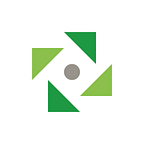If there is a must in the IT world, that is Docker. Ever since the beginning of the free software back in 2013, the usage of Docker has skyrocketed. One year later, Google introduced the platform that facilitates orchestrating containers, Kubernetes. Together Docker and Kubernetes are among the most demanded skills by software firms worldwide. Research shows that Kubernetes’ job searches climbed by 2,125% between 2015 and 2019.
Keeping in mind the significant usage and efficiency of Kubernetes, the software has emerged as the most popular container orchestration platform. As a result, by 2021, over half of the enterprises had implemented Kubernetes. In addition to all of this, in 2021, 46% of respondents planned to use Kubernetes.
If all this hasn’t convinced you to go to Keitaro training and get your Certificate in Docker and Kubernetes, continue reading. An added advantage to learning Docker and Kubernetes is that it will open you to job opportunities such as DevOps, software, and cloud engineers roles. Firms such as Microsoft, IBM, and Infosys have many jobs for DevOps experts with Docker and Kubernetes knowledge.
The pay rate for a Docker Kubernetes in the United States is $143,745 as of June 4, 2022. This figure equates to $11,979 per month.
Most companies, such as Google, Spotify, Capital One, Addidas, Pinterest, etc., have already employed Docker and Kubernetes technology.
Surprising Facts About Docker and Kubernetes
Below are some surprising facts about Docker and Kubernetes you probably did not know.
- Docker Runs on More Than 20% Of All Hosts.
And the proportion of hosts running Docker continues to rise across all Datadog environments. In 2018, Docker was running on around 21% of all hosts. This share has increased consistently by roughly 5 % points per year.
- Kubernetes Is Sometimes Known as K8s
This abbreviation for Kubernetes first appeared in the 1980s, when computing businesses faced new issues while spreading their software across the globe.
The goal was to ease all sorts of communication in an IT organization. Individuals began abbreviating this word depending on its first and last letters and the number of characters in between.
You will occasionally find i10n for localization and i18n for internationalization. Likewise, Kubernetes has eight letters in addition to the “K” and “s” letters.
- Over Half Of Docker Environments Are Orchestrated
Docker implements a containerization technique. With the demand for automation across every industry, Docker effortlessly encapsulates automated workload orchestration.
More than half of Docker settings enterprises use orchestrators such as Kubernetes, Mesos, etc. Some use orchestration systems such as AWS, Azure, and Google Cloud Platform.
The use of Kubernetes has risen since the Amazon Elastic Container Service for Kubernetes in 2017. Kubernetes is undeniably the most rapidly developing orchestration technology. The major cloud providers are adopting it.
- Docker Usage Rates Rise With Growth in Infrastructure
Organizations with larger infrastructure deployments are driving Docker adoption.
According to a survey, statistics depict container technology utilization in enterprises. In 2018, more than half of individuals said their firms used Docker container technology.
- K8s Can Support Hybrid Environments
When computer resources are partitioned into cloud and colocation resources, they share the same cluster in a hybrid environment. In general, this provides two key advantages: you will have additional resources for peak workloads, and it simplifies cloud migration by utilizing the company’s existing computing resources.
Kubernetes Cluster Federation (KubeFed) is the K8S solution for this scenario. It enables a federation of Kubernetes to collaborate. Each Kubernetes is installed in a different location and connects with a centralized site that manages them all.
- There Is a Distinction Between a Pod and a Container
The pod, not the container, is the control unit in Kubernetes.
A pod refers to a collection of one or more containers that all serve the same purpose. This one is a subset of a more extensive application.
Kubernetes controls pods, scales them, and checks their health. The quantity of pods, not containers, is used to mount the application in Kubernetes.
Most pods hold a single container, but there may be numerous, and this collection of containers is firmly determined. Containers do not scale within a pod, which should be considered while designing applications.
Conclusion
If you want to take advantage of container orchestration, you should use Docker and Kubernetes. Furthermore, if you are a DevOps professional or operate in the cloud, you should broaden your skills by understanding Docker and Kubernetes. If you want to study Docker and Kubernetes, you should enroll in a training course and learn Docker and Kubernetes.
This was originally published on keitaro.com
